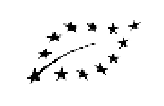Agriculture Reference
In-Depth Information
and yeast; the main labeling provisions; new rules on inspection; import and labeling, and
its applicability after January 1, 2009.
According to the art. 1, organic production was defined as an overall system of farm
management and food production whose function was to combine the best environmental
practices, a high level of biodiversity, the preservation of natural resources, the application
of animal welfare standards in order to meet consumers' demand with products of high
quality. The Regulation dedicated a complete section to organic labeling rules. To illustrate,
all usual common terms for “organic” in the different member states and its derivatives and
diminutives were equally protected in their use. The term “organic” was not applied to
agricultural products which clearly had no connection with organic production and those
which contained GMOs (Genetic Modified Organisms). Nevertheless, the organic labeling
had to explicate the general limit of 0.9 % for the accidental presence of GMOs. Secondly, the
new European logo became compulsory on packaged European products, even though
national and private logos could still be used. For the first time, the organic logo was
compulsory for only those food products with at least 95% of the organic ingredients whose
the raw materials composed the products. The indication had to mention i) EU Agriculture
where the agricultural raw material had been farmed in the EU., ii) non-EU Agriculture,
where the agricultural raw material came from third world countries, and iii) EU/ non-EU
Agriculture, where the origin of raw material was mixed, meaning that it had been farmed
both in the UE countries and third World countries. Organic ingredients in non-organic food
had to be listed as organic in the list of ingredients, while the code number of the control
body had to be indicated in order to guarantee better transparency.
Since the introduction of a new logo was supported by all European States, the European
Commission organized an EU-wide organic logo competition opened to art and design
students from all EU countries. The competition was won by the German design student
Dušan Milenković, who received 63% of the overall votes from the European public. Hence,
European Union launched a second certifying symbol in the Regulation 271/2010 where
the organic logo was definitively mandatory, also called: “Euro-leaf” which symbolized the
marriage of Europe (the stars derived from the European flag) and Nature (the stylized leaf
and the green color), as shown in figure 2. In accordance with this last regulation, there will
be a two year transition period for allowing its introduction on the packaging.
Fig. 2. Organic logo introduced in Commission Regulation 271/2010
In Italy, the certification bodies, which carry out the organic certification, are authorized by
the Ministry of Agriculture. They are private entities and their main task is to ensure
compliance with the implementation of regulations by the organic farms and give their own
brand labels to be affixed to products sold. To illustrate, certification body has own brand
label which has to be used only by those organic farmers associated to it in order to avoid
that one organic farmer achieves organic certification from more than certification
enterprise. In general, they do not have to entertain any relationship with organic farms and
they carry out inspections every year. The inspection consists in compliance with











Search WWH ::

Custom Search